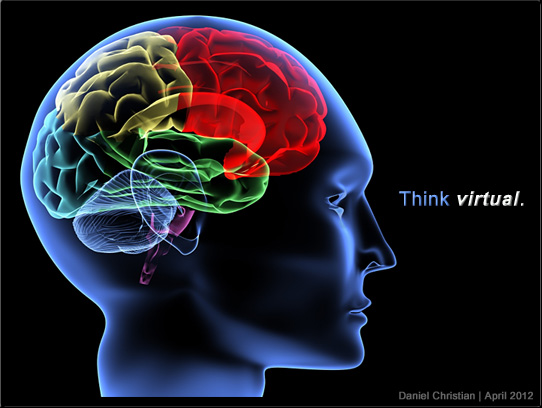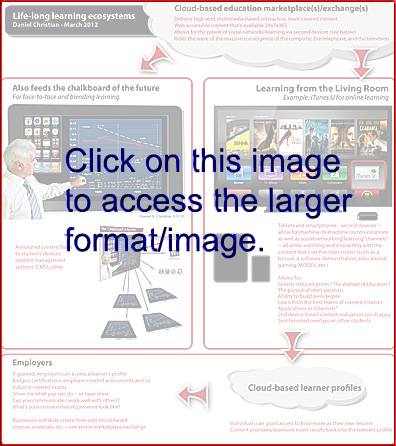From DSC:
I continue to watch this space as the foundations are being put into place for what I’m calling, “Learning from the Living [Class] Room.”
.





An à la carte Apple TV concept integrates Siri, FaceTime, and cable/satellite providers (Gallery) — from 9to5mac.com by Jordan Kahn
Example “screenshots” from this concept:
.
Also see:
From DSC:
This relates to what I’m calling “Learning from the Living [Class] Room”
.
![The-Living-Class-Room-Daniel-S-Christian---July-2012 The Living [Class] Room -- by Daniel Christian -- July 2012 -- a second device used in conjunction with a Smart/Connected TV](http://danielschristian.com/learning-ecosystems/wp-content/uploads/2012/07/The-Living-Class-Room-Daniel-S-Christian-July-2012.jpg)
![HigherEducationNowAtBat--DanielChristian Higher education used to be on deck, but is now at bat. [Christian]](http://danielschristian.com/learning-ecosystems/wp-content/uploads/2012/09/HigherEducationNowAtBat-DanielChristian1.jpg)
From DSC:
My way of thinking about what’s happening to higher education these days borrows from the sport of baseball: Higher education used to be on deck; but now, we’re at bat.
I’ve watched as the former power brokers throughout many other industries reluctantly got out of the dugout, nervously began their warm up on deck, and then timidly moved up to bat as well. They were trying to cling to the status quo. Which didn’t work. We’ve all seen the results. There are new power brokers in those industries now. (Which is I why I assert that there is danger in the status quo — our organizations need to always be at the work of reinventing ourselves.)
…
If I had to pick the top 2 forces driving change throughout the higher education landscape, I would have to say the cost of obtaining a degree and technology-enabled innovation.
…
Control is an illusion; people will find a way.
Apple TV and the transformation of web apps into tablet and TV dual screen apps — from brightcove.com by Jeremy Allaire
.
Excerpts:
Importantly, designers and developers need to shed the concept that “TVs” are for rendering video, and instead think about “TVs” as large monitors on which they can render applications, content and interactivity that is supported by a touch-based tablet application.
…
The key concept here is that this pervasive adoption of TV monitors is the tip of the spear in creating a social computing surface in the real world.
…
Specifically, Apple has provided the backbone for dual screen apps, enabling:
- Any iOS device (and OSX Mountain Lion-enabled PCs) to broadcast its screen onto a TV. Think of this as essentially a wireless HDMI output to a TV. If you haven’t played with AirPlay mirroring features in iOS and Apple TV, give it a spin, it’s a really exciting development.
- A set of APIs and an event model for enabling applications to become “dual screen aware” (e.g. to know when a device has a TV screen it can connect to, and to handle rendering information, data and content onto both the touch screen and the TV screen).
…
[Jeremy listed several applications for these concepts: Buying a house, buying a car, doctor’s office, kids edutainment, the classroom, retail electronics store, consuming news, consuming video, sales reporting, board games.]
.
Also see:
From DSC:
Graphically speaking — and approaching this from an educational/learning ecosystems standpoint — I call this, “Learning from the Living [Class] Room.
.
![The-Living-Class-Room-Daniel-S-Christian---July-2012 The Living [Class] Room -- by Daniel Christian -- July 2012 -- a second device used in conjunction with a Smart/Connected TV](http://danielschristian.com/learning-ecosystems/wp-content/uploads/2012/07/The-Living-Class-Room-Daniel-S-Christian-July-2012.jpg)

Related item:
Your future TV is not about Tele-Vision — from FastCompany.com by Kit Eaton
Excerpt (emphasis below from DSC; also see the above categories to see how I see this as a highly-relevant component to our future learning ecosystems):
Then imagine what a hybrid of Apple’s tech and efforts like GetGlue, Shazam, and other interactive systems will be like when they’re more integrated into your 2017 smart TV. The big screen in your living room won’t be a one-way window into another world you can’t touch anymore. It’ll be a discovery engine, a way to learn facts, interact with the world, talk to people, find new and surprising content to absorb. Advertisers will love it, and companies like Nielsen–which largely has to guess all those stats about who watches which show at primetime nowadays–will be able to get accurate data…which may mean more appealing shows.
![The-Living-Class-Room-Daniel-S-Christian---July-2012 The Living [Class] Room -- by Daniel Christian -- July 2012 -- a second device used in conjunction with a Smart/Connected TV](http://danielschristian.com/learning-ecosystems/wp-content/uploads/2012/07/The-Living-Class-Room-Daniel-S-Christian-July-2012.jpg)
Also see:
From DSC:
When the technologies behind IBM’s Watson and Apple’s Siri get perfected and integrated into products and services that will make up the near future “Learning from the Living [Class] Room” environment— there will be:
![The-Living-Class-Room-Daniel-S-Christian---July-2012 The Living [Class] Room -- by Daniel Christian -- July 2012 -- a second device used in conjunction with a Smart/Connected TV](http://danielschristian.com/learning-ecosystems/wp-content/uploads/2012/07/The-Living-Class-Room-Daniel-S-Christian-July-2012.jpg)
.
Addendums:
![The-Living-Class-Room-Daniel-S-Christian---July-2012 The Living [Class] Room -- by Daniel Christian -- July 2012 -- a second device used in conjunction with a Smart/Connected TV](http://danielschristian.com/learning-ecosystems/wp-content/uploads/2012/07/The-Living-Class-Room-Daniel-S-Christian-July-2012.jpg)
Addendum on 7/3/12 from an article I wrote for EvoLLLution.com (for LifeLong Learning):
Establishing better collaboration between the corporate world and higher education [Christian]
In the near future, perhaps we could have second screen-based activities whereby corporate leaders are giving TED-like presentations or expressing the current issues in their worlds via a program on Smart TVs, and the students are communicating and collaborating about these presentations via tablets or smart phones. Perhaps there will be electronic means whereby students could submit their ideas and feedback to the presenting companies (and whereby selected ideas could be rewarded in terms of free products or services that the company produces).
Contents
Behind this report
The 10 most impressive virtual high schools in the U.S. — from bestcollegesonline.com
Excerpt:
To us, virtual high schools sound like something from The Jetsons, but instead of existing in a world with robot maids and flying cars, they’re here today, and they are really cool. These online schools offer incredible opportunities to homeschoolers, dropouts returning to high school, students with busy schedules, and others who just enjoy the freedom, flexibility, and opportunity provided by virtual learning. We’ve discovered 10 really impressive virtual high schools, including tuition-free and even 3D virtual world schools, that we hope you’ll check out.

From DSC:
The human voice, as game changer — from nytimes.com by Natasha Singer

Matthew Cavanaugh for The New York Times
Vlad Sejnoha demonstrated Nuance’s Dragon TV system, which obeys spoken commands to
flip channels, for example, or shop on screen on Amazon.com.
Apple’s iCloud will teach Apple’s Smart TV remote new tricks — from patentlyapple.com
6 answers about your next TV, with or without Apple — from forbes.com by Michael Humphrey
10 tech commandments for the TV industry — from thenextweb.com by Martin Bryant
Smart TVs are growing in popularity — from business-news.thestreet.com by Steve Adams

Image from Gary Higgins/The Patriot Ledger
.
10 AirPlay-ready iPad apps that make Apple TV worth it — from readwriteweb.com by John Paul Titlow
Entertainment and Streaming Media – The Recent Past and the Future — from homesystemintegration.com by Alan Ruby

.
TVs may soon be used to spy on you — from smartplanet.com by Tuan C. Nguyen
Will Microsoft beat Apple and Google to make Connected TV work? –– from econsultancy.com by Sam Dwyer
From DSC:
Yesterday, I introduced a vision that integrates a variety of trends and emerging technologies that I’ve been keeping an eye on.
Today, I want to focus on what this means for jobs, employment, career development — especially as it relates to higher ed and the corporate world.
As the trends are pointing out, there will be teams of specialists — with a variety of skillsets required — and each of these team members will play a different role. Some of these positions are captured in the graphic immediately below:
(many for-profit schools already have that table set)
.

Within higher ed, the extent to which this affects faculty members depends upon how these teams are formed. If faculty members don’t go along with this, institutions will likely reach out to adjunct faculty members — or contracted firms/help — to fill the gaps. Unless there are some other distinguishing factors, those institutions who don’t move towards a team-based approach will become irrelevant. It will be increasingly difficult for one person to develop the content that can compete with a team of specialists. Also, organizations of excellence — who have higher initial development costs — will be able to spread these costs out over a global pool of students — resulting in a significantly cheaper alternative. Organizations who don’t move in this direction may find that the pipelines coming into their institutions continue to get smaller.
There will be new jobs available — and changes to some existing jobs — as well, such as:
Roles may be altered for professors, teachers, and trainers. But teaching others how to discern quality information will likely continue to be important.
Employers may end up developing their own curriculum/cloud-based apps. Apprentices, interns and prospective employees will be able to access these materials, with the understanding that they will be assessed at some point.
The web-based learner profiles will demonstrate where someone has been — and where they are currently at.
That’s it for now, but I will be jotting down further thoughts re: this vision from time to time.
.
From DSC:
The vision below involves:
(click on the image below to access it)
.
From DSC:
Here are some items related to what I call “Learning from the Living Room” — a trend that continues to develop that involves:
.
.
The modern mechanics of app stores: today, tomorrow and connected TV — from guardian.co.uk by Dean Johnson
Excerpt:
What’s next for app stores?
It’s time for each platform to up its game – smart TVs are coming. The small and medium screen experience will shortly be translated to the bigger screen as connectivity and discoverability takes on even greater importance.
Google and Apple will further interweave themselves into our daily lives as iOS and Android seamlessly combine our smartphones and tablets with our new smartTVs. Electronic Program Guides (EPGs) and the programmes themselves will suggest related content, from apps to music to film to books. This must all be presented in an approachable, then browsable manner to encourage additional discovery.
The quest for the perfect meta-data will become increasingly important and voice commands will need to deliver the best search results with the minimum of fuss. This time next year, the battle of the app stores will be fought on the move, on the desktop and on the living room wall.
.
Samsung Launches Smart TVs With Gestures, Voice Control — from by Douglas Perry
Excerpt:
A Kinect-like feature is made possible via camera and microphone integration that comes standard with the LED ES7500, LED ES8000 and Plasma E8000 models. According to Samsung, consumers can launch apps such as Facebook or YouTube, or search the web via voice commands. Waving the hand will move the cursor and select links. The TVs integrate a Samsung dual-core processor as well as a new Webkit-based web browser to improve overall performance. The high-end 7500 and 8000 TVs ship with a remote with an integrated touchscreen. A wireless keyboard that is compatible with Samsung’s TVs as well as the Galaxy Tab tablet is sold as an option.
.
New TV experiences through companion apps — from moxie pulse
.
